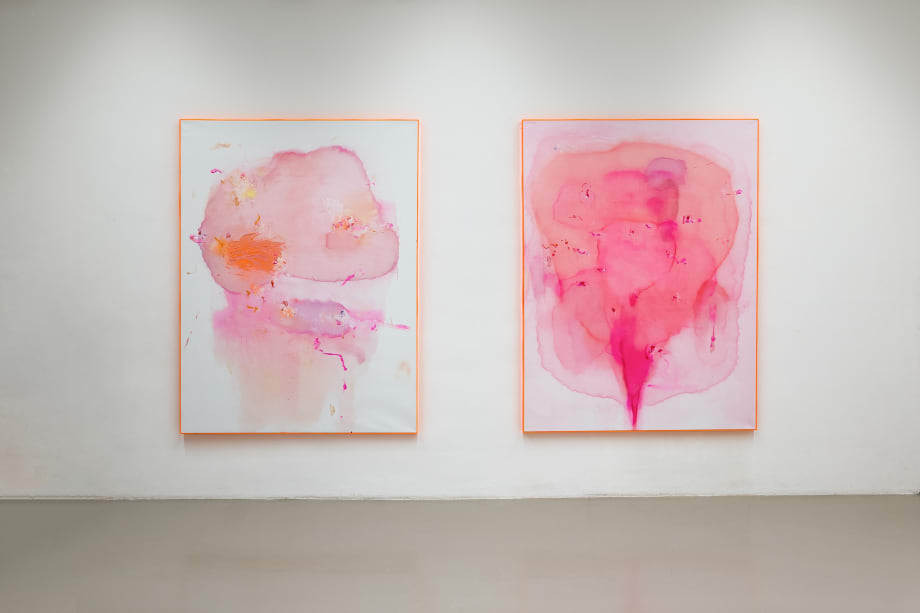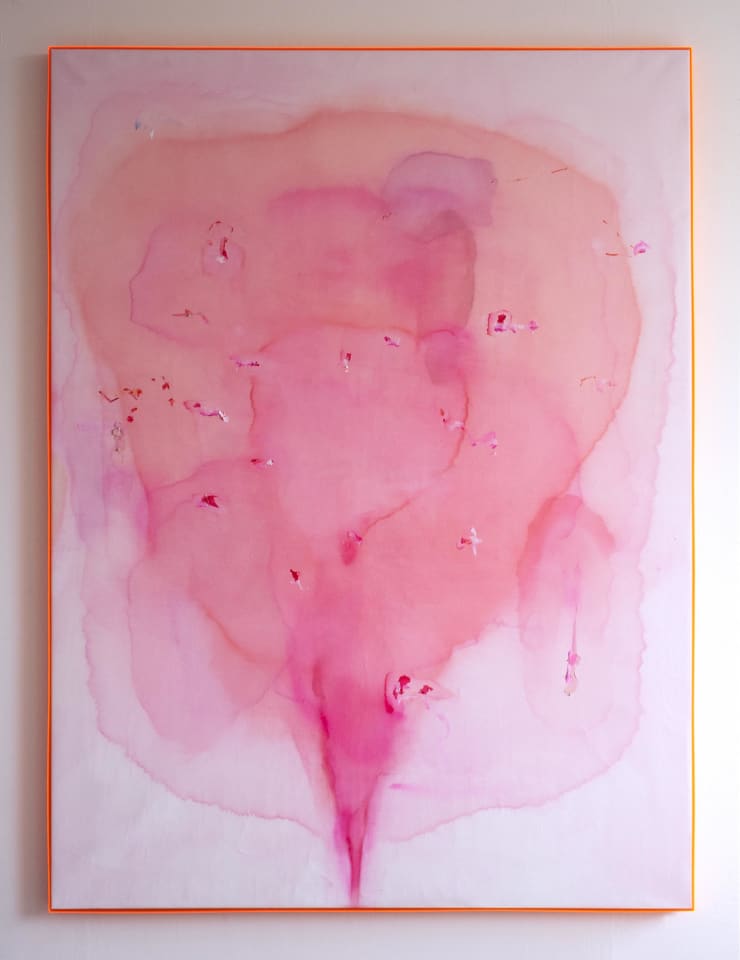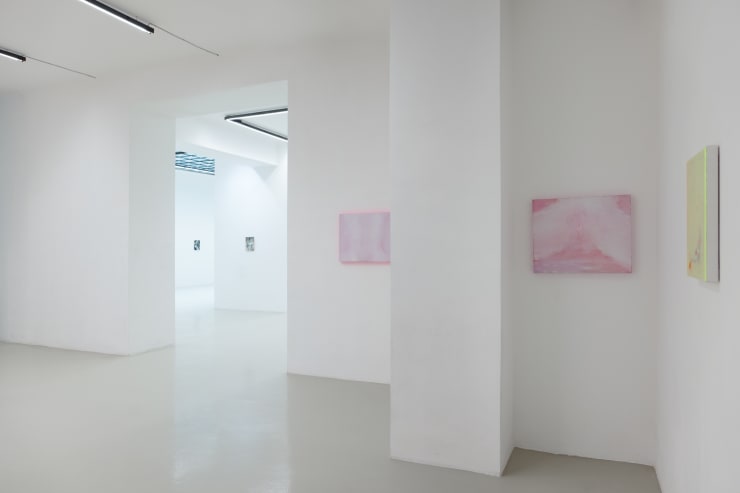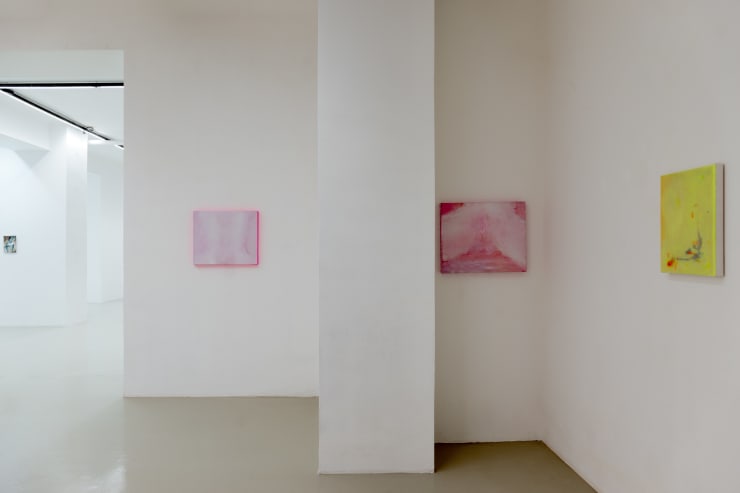Ville Kylätasku I Project Room : PROJECT ROOM
When getting to know Kylätasku’s (*1979; Tampere, Finland) take on artistic work and on life, one’s attention shifts to two points in specific. These points can be called anachronistic, or even a countercurrent to the zeitgeist.
Firstly, as opposed to the self-referencing and inwardness often associated with contemporary art, Kylätasku boldly reaches for large-scale topics of a human and metaphysical nature. And further, as an antithesis to an atmosphere dampened by postmodern irony, he does not retreat to artificial coolness but instead, deals with life and art with a passion, showing sincere interest towards grand questions. In the history of philosophy and religion, these ultimate questions of life have been entitled perennial, ones that are infinitely recurring, ones without a final answer.
In Kylätasku’s work, the eternal questions lean on metaphysical and human opposites or counterparts, and on their questioning. Spirit and matter, awareness and body, thinking and experience, self and otherness, desire and object of desire, presence and absence, visible and invisible – these life-defining counterparts, and many more, meet one another in Kylätasku’s work, both in form and content.
Ville Kylätaskus (*1979; Tampere, Finnland) Malereien sind vielfältig. Die Materialien und Formate befragen und erweitern das klassische Tafelbild auf spielerische wie humorvolle Art und Weise. Die Leinwand wird durch Kunststoff ersetzt, mehrere Bildträger werden zusammengefügt, Rahmen werden zu integralen Bestandteilen des Bildes. Es wird gesprüht, gewischt, getropft, gemalt, es verläuft. Der Künstler hat eine ganz eigene Formensprache, die mal komplex, mal minimal ausformuliert wird. Es lassen sich nicht nur philosophische, sondern auch kunsthistorische Bezüge finden: Das Malen in vielen Schichten bezieht sich auf die Renaissance, die Vanitas-Motive auf den Barock. Doch er hat diese Verweise in sein eigenes, sehr zeitgenössisches Vokabular überführt.
-
 Ville Kylätasku,When Butterflies Turn To Dust, 2017Oil on Canvas with plexiglass frame200 x 150 cm
Ville Kylätasku,When Butterflies Turn To Dust, 2017Oil on Canvas with plexiglass frame200 x 150 cm -
 Ville KylätaskuGasping, 2017Oil on Canvas with a plexiglass frame200x150 cm
Ville KylätaskuGasping, 2017Oil on Canvas with a plexiglass frame200x150 cm -
 Ville KylätaskuHarder Faster Beautiful, 2017Oil on Canvas50x60x4,5 cm
Ville KylätaskuHarder Faster Beautiful, 2017Oil on Canvas50x60x4,5 cm -
 Ville KylätaskuVanitas, 2016Acrylics and collage on layered transparent PVC140 x 120 cm
Ville KylätaskuVanitas, 2016Acrylics and collage on layered transparent PVC140 x 120 cm -
 Ville KylätaskuDecay I, 2017mixed media on paper and PVC44 x 33 cm
Ville KylätaskuDecay I, 2017mixed media on paper and PVC44 x 33 cm
Galerie Lisa Kandlhofer is pleased to announce the first solo exhibition of Ville Kylätasku in Austria.
When getting to know Kylätasku’s (*1979; Tampere, Finland) take on artistic work and on life, one’s attention shifts to two points in specific. These points can be called anachronistic, or even a countercurrent to the zeitgeist.
Firstly, as opposed to the self-referencing and inwardness often associated with contemporary art, Kylätasku boldly reaches for large-scale topics of a human and metaphysical nature. And further, as an antithesis to an atmosphere dampened by postmodern irony, he does not retreat to artificial coolness but instead, deals with life and art with a passion, showing sincere interest towards grand questions. In the history of philosophy and religion, these ultimate questions of life have been entitled perennial, ones that are infinitely recurring, ones without a final answer.
In Kylätasku’s work, the eternal questions lean on metaphysical and human opposites or counterparts, and on their questioning. Spirit and matter, awareness and body, thinking and experience, self and otherness, desire and object of desire, presence and absence, visible and invisible – these life-defining counterparts, and many more, meet one another in Kylätasku’s work, both in form and content.
—Tuukka Tomperi
Ville Kylätasku lives and works in Berlin.
His work is included in Modern Museum of Kuntsi, Swanljung collection, Finland; EMO Foundation, Finland; Miettinen Collection, Berlin / Helsinki; Peters-Messer Collection, Düsseldorf; Hermann Collection, Berlin; Matt Roberts Arts Collection, London; Fränti Collection, Helsinki.
Galerie Lisa Kandlhofer freut sich, Ville Kylätaskus erste Einzelausstellung in Österreich zeigen zu dürfen.
Die Malereien von Ville Kylätasku sind verführerisch. Ihre Materialität ist anziehend, faszinierend und geheimnisvoll. Viele Bilder sind – ästhetisch wie buchstäblich – vielschichtig: leicht transparente Lagen aus weißem Kunststoff, oder neongelbes, fluoreszierendes Acrylglas, das die Bilder mit Licht zu rahmen scheint. Sie lassen Keilrahmen, Vogelfedern und Pinselstriche durchblicken, und Körperteile erkennen – Lippen, uneindeutige organische Formen – ein Gehirn? Oder doch eine Vagina? – Fußabdrücke, einen Teil einer Silhouette. Die Motive sind nicht auf den ersten Blick erkennbar, sondern leben von ihrer Uneindeutigkeit. Eine Blume inmitten einer geordneten Punktestruktur? Ein Fleck? Manchmal geben die Titel Hinweise: Decay/Verfall. Vanitas-Symbole bilden ein wiederkehrendes Thema. Ein Totenkopf, ein Blumenstillleben, weiße Federn, die an einen kleinen, nicht mehr lebendigen Vogelkörper erinnern.
Ville Kylätaskus Malereien sind vielfältig. Die Materialien und Formate befragen und erweitern das klassische Tafelbild auf spielerische wie humorvolle Art und Weise. Die Leinwand wird durch Kunststoff ersetzt, mehrere Bildträger werden zusammengefügt, Rahmen werden zu integralen Bestandteilen des Bildes. Es wird gesprüht, gewischt, getropft, gemalt, es verläuft. Der Künstler hat eine ganz eigene Formensprache, die mal komplex, mal minimal ausformuliert wird. Es lassen sich nicht nur philosophische, sondern auch kunsthistorische Bezüge finden: Das Malen in vielen Schichten bezieht sich auf die Renaissance, die Vanitas-Motive auf den Barock. Doch er hat diese Verweise in sein eigenes, sehr zeitgenössisches Vokabular überführt.
— Isabelle Meiffert
Ville Kylätasku (*1979; Tampere, Finnland) lebt und arbeitet in Berlin.
Seine Arbeiten befinden sich in folgenden Sammlungen: Modern Museum of Kuntsi, Swanljung collection, Finland; EMO Foundation, Finland; Miettinen Collection, Berlin / Helsinki; Peters-Messer Collection, Düsseldorf; Hermann Collection, Berlin; Matt Roberts Arts Collection, London; Fränti Collection, Helsinki.









